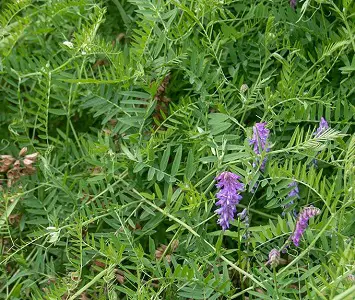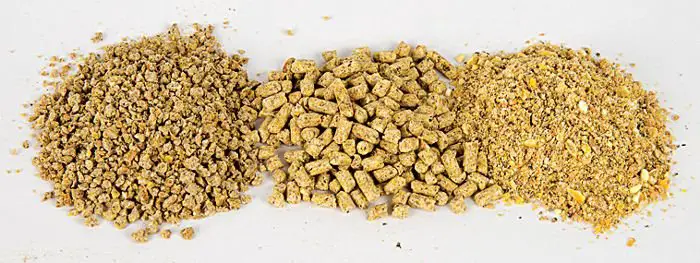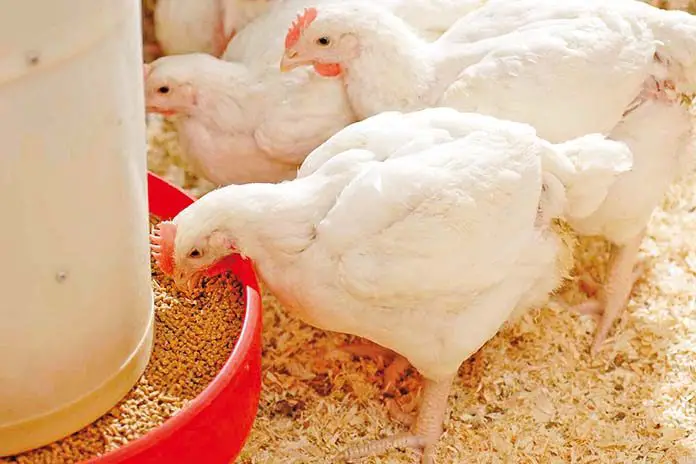Vetch belongs to the pea family with over 140 species of vetch of which faba beans are the most widely used in the group. Vetch can be grown as a cover crop to avoid soil erosion and also as a fodder crop for feeding cows. Cows can eat vetch, and because vetch is a legume it can be fed to improve the protein content of feed for cows. However, not all species of vetch are palatable, and some can be toxic if fed in large quantities, especially in cases where the seeds are fed.
Contents
What is Vetch?
Vetch is an annual legume grown across the world as a cover crop, fodder, and green manure and over 140 varieties are in this family. Vetch belongs to the pea family and hence produces pods with seeds that can also be fed to cows after processing. Out of all the varieties available five are of the most significant importance to feeding cows being, faba bean, purple vetch, narbon vetch, hairy vetch, and the common vetch itself. Vetch can be grown along with grass pastures to boost the protein levels of the available grazing. Vetch is also highly digestible, although some species with anti-nutritional factors like purple and hairy vetch have lower digestibility figures they are relatively high compared to other forages.
Typical Nutrient Analysis of Vetch
Vetch like most legumes is high in crude protein and highly digestible, the challenge with vetch is that other varieties are not very palatable to cows. The average protein level of vetch is 24% on a dry matter basis which helps supplement grass that has a low protein level. The nutritive value decreases as the vetch plant matures but due to a low fiber content remains relatively highly digestible.
Plant
The vetch plant has relatively good feeding value and has very few known antinutritional factors. Other varieties, however, like hairy vetch do contain some anti-nutritional factors like the amino acid l-canavanine, which can lead to reduced feed intakes or poisoning. Protein content can vary from between 14-20% depending on variety, and stage of maturation, normally highest around flowering. The vetch plant can be consumed by cows dry as hay, fresh, and/or ensiled which makes it a good forage to incorporate in feeding programs for all seasons.
Vetch Seeds
The vetch seeds or beans are highly digestible when fed to cows and can be used as a substitute for soya beans or other oils cakes. However, purple vetch beans for example have been shown to be toxic to cows and hence should be avoided, faba, narbon, and common vetch beans can be fed to cows. The beans can be fed raw or processed although processed beans are of a better feeding value than raw ones. There are concerns around feeding vetch beans to dairy cows as a replacement for soya beans as there have been reports of negative effects on the milk taste and safety.
Is Vetch Safe for Feeding to Cows?
Vetch makes a good forage species for feeding cows in conjunction with good-quality grass, as it contributes protein to the overall diet. Some species of vetch do contain antinutritional factors which make them less palatable to cows reducing intake. Care should be taken however when grazing or feeding the vetch plant after flowering as the beans from some species are toxic to cows. It is important to identify the variety of vetch before feeding to cows to avoid incidences of poisoning.
How Much Vetch to Feed to Cows?
There are no real set limits on how much vetch to feed to cows, the most important aspect is to make sure that the variety of vetch available is safe to feed to cows. Another consideration is the maturity stage of the plant, the more the plant matures the less digestible it becomes, and the risk of cows consuming seed increases. The beans contain antinutritional factors and should be fed with more caution as they can be a poisoning risk especially when fed raw. The seeds should be used to partially substitute traditional oil seeds like soya, cottonseed, and rapeseed.
Challenges of Feeding Vetch to Cows
As discussed above some varieties of vetch contain anti-nutritional factors or toxins that make them less palatable to cows or potentially harmful or lethal to the cows. Vetch has more than 140 known varieties hence farmers need to be careful about which species are either growing native in their pastures or which to feed to their cows. Cases of vetch poisoning have been reported on cows fed on purple vetch pastures. Although more work needs to be done on the impact of vetch feeding on cows there have been reports on the negative impacts of vetch on milk taste.
Can Cows Eat Oats
Cows can eat oats, they are a very valuable grain in ruminant feeding as they contain a good amount of energy and fiber. Oats can be fed to cows whole or processed, and offer a safer option when it comes to grains for feeding high-performing cows. Oats can be fed to growing, feedlot, and dairy cows with little risk of acidosis and other digestive challenges.
Conclusion
In conclusion, cows can eat vetch fresh, dry, and/or ensiled, the vetch seeds can also be fed to cows raw or processed without affecting the performance of the cows. Some vetch varieties are toxic to cattle and care should be taken to first identify the vetch before feeding to cows to avoid vetch poisoning. Vetch can be grown together with grass to boost the protein content of the veld as it contains a modest amount of protein more than that of most common grasses. Vetch is also highly digestible when fed to cows which helps improve the overall digestibility of the diet. Vetch seeds can be used to replace expensive traditional oils seeds like soya saving on the feed cost. There are contradictory results around feeding vetch to dairy cows, with some reports that vetch affects the milk taste, and makes the milk not safe for consumption. In all vetch offers a good cow feed, utilizing both the plant and the seeds, without affecting the performance of the animals.




